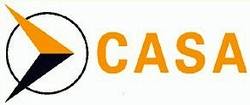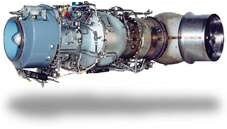AD NUMBER: AD/MAKILA/14
 MANUFACTURER: Turbomeca
Turbine Engines - Makila SeriesSUBJECT: Airworthiness Directive
AD/MAKILA/14
MANUFACTURER: Turbomeca
Turbine Engines - Makila SeriesSUBJECT: Airworthiness Directive
AD/MAKILA/14
Applicability: Makila 1A and 1A1 turboshaft
engines, all serial numbers, having Engine Control Units (ECU)
equipped with TU250 Comparator / Selector (CS) boards with serial
numbers (S/N) in the range 241 EL to 1192 EL.
Note 1: CS boards with S/N in the above range
are hereafter referred to as the
suspect batch.
Note 2: Makila 1A and 1A1 engines are installed
in, but not limited to, Eurocopter
AS 332 C, C1, L and L1 helicopters.
Requirement: 1. If both TU250 CS boards on the
same helicopter are from the suspect batch and if both have an
operating time since new of less than 200 hours, unless previously
accomplished, replace at least one of the boards with a board not
from the suspect batch in accordance with the instructions of
Turboméca Mandatory Service Bulletin (MSB) 298 73 0809
Version A dated 12 February 2008.
2. Unless accomplished previously, replace all TU250 CS boards
from the suspect batch with boards not from the suspect batch in
accordance with the instructions of Turboméca MSB 298 73
0810 Version B dated 27 April 2009.
Replacement of all TU250 CS boards, accomplished prior to the
effective date of this Directive, in accordance with
Turboméca MSB 298 73 0810 Version A dated 12 February 2008
is acceptable for compliance with Requirement 2.
The use of later Versions of the above MSBs, approved by the
European Aviation Safety Agency (EASA), are acceptable for
compliance with the requirements of this Directive.
Note 3: EASA AD 2009-0090 refers.
 Compliance: For Requirement
1 - Within 50 hours time in service from the effective date of this
Directive.
Compliance: For Requirement
1 - Within 50 hours time in service from the effective date of this
Directive.
For Requirement 2 - During the next 500-hour routine inspection,
or before 30 November 2009, whichever occurs first.
Background: Makila 1A and 1A1 ECUs incorporate
a backup control law that fixes N1 (gas generator speed) at 65%
when at least two of the three N2 (power turbine speed) signals are
lost. The intent is to limit the maximum speed attainable by the
power turbine in the event of a failure of the shaft between the
engine and the main gearbox that could result in collateral damage
to the N2 speed probes.
Several occurrences of 65% N1 backup activation remain
unexplained despite detailed investigation. It is postulated that
the events may have been due to corruption of the engine N2 speed
signals by short perturbations, for example by electromagnetic
interference. The potential therefore existed for a hazardous
condition in which both engines on the same helicopter were
simultaneously affected. To address this risk, Turboméca
introduced modification TU250, which affects the CS board in the
ECU and allows recovery from the 65% backup mode if the loss of N2
speed signals is determined to be temporary. Incorporation of
modification TU250 was mandated by AD/MAKILA/9 (EASA AD
2007-0144).
The installation of TU250 CS boards, however, has resulted in a
few occurrences of erratic engine behaviour, in the form of
unexpected N1 variations and/or illumination of the
“GOV” warning light. The conclusions from an
investigation by Turboméca are that these malfunctions are
due to a lapse of quality control in the varnishing process applied
to the boards, and that only boards in a specific serial number
range, as defined under “Applicability” and referred to
below as the “suspect batch”, are affected.
Turboméca has addressed this latest concern in two steps
which provide first a nearterm and then a long-term solution. The
two steps are described in the referenced mandatory service
bulletins (MSB).
The first step, described in MSB 298 73 0809, recommends that no
helicopter has CS boards from the suspect batch in both engines.
Boards with more than 200 hours of trouble-free operation are
exempt because service experience has shown that the malfunctions
potentially induced by this manufacturing discrepancy are most
likely to occur early in the lives of the boards.
The second step, described in MSB 298 73 0810, recommends that
ultimately all TU250 CS boards in the suspect batch, regardless of
time in operation, be replaced with TU250 boards not from the
suspect batch.
 ANN's Daily Aero-Linx (04.13.24)
ANN's Daily Aero-Linx (04.13.24) ANN's Daily Aero-Term (04.13.24): Beyond Visual Line Of Sight (BVLOS)
ANN's Daily Aero-Term (04.13.24): Beyond Visual Line Of Sight (BVLOS) Airborne 04.09.24: SnF24!, Piper-DeltaHawk!, Fisher Update, Junkers
Airborne 04.09.24: SnF24!, Piper-DeltaHawk!, Fisher Update, Junkers Aero-News: Quote of the Day (04.14.24)
Aero-News: Quote of the Day (04.14.24) ANN's Daily Aero-Term (04.14.24): Maximum Authorized Altitude
ANN's Daily Aero-Term (04.14.24): Maximum Authorized Altitude




